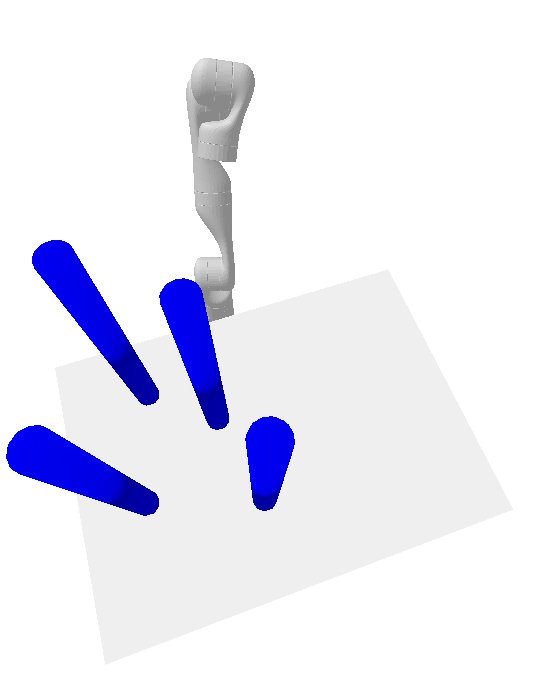EmPRISE Robotics Laboratory
Contact-Rich Planning for Safe Whole-arm Manipulation and Control
I am researching contact-rich global planning for whole-arm manipulation (first-author), focusing on ways to combine Model Predictive Control with offline planning to enable robot arms to move around humans while safely making contact across the entire robot arm and regulating contact forces. I am specifically using a robot arm equipped with 28 external haptic force sensors (taxels) so that MPC can regulate forces in real time. My key insight is that reasoning about manipulability at contact locations as part of the cost function when performing trajectory optimization should create trajectories that ensure the robot has enough flexibility of movement at contact points for the MPC to effectively regulate contact forces, avoid local minima, and safely react to unexpected human movements with minimal disruption to the overall goal. Guiding the MPC along the least dangerous path should allow for more effective and safe robotics for pHRI.
My current approach relies on specifically maximizing √det(JJ’), a metric of the volume of the manipulability ellipsoid, using the contact-Jacobian for each contact location. I am weighting this manipulability cost for each taxel as a function of its distance to the obstacle, ensuring that the closest taxels have more importance. This cost is incorporated into a trajectory optimization stack (CasADi solved with IPOPT) along with distance and smoothness costs. For initialization, I am using multiple seeds of a task-space RRT algorithm running collision-aware inverse kinematics (Mink) so as to avoid optimization local minima and ensure a solution is found. Some penetration is allowed to simulate contact, but in reality contact is likely to be made due to inaccuracy in modeling and movement of obstacles such as humans. Planning with such whole-arm contacts in mind ensures that the robot can always regulate contact forces to perform its tasks safely when around humans, which allows a much greater workspace area than enforcing a safety clearance. I am utilizing PyBullet and MuJoCo as part of this project.
This experience has been absolutely crucial with regards to understanding and experiencing the full cycle of research. I worked on my own research project with complete independence other than weekly advisor meetings: performing literature review, narrowing down key exploration topics and strategies, building code infrastructure, deriving and implementing various original algorithms, testing my methods, adjusting my focus, iterating, and writing reports on my findings.
Multimodal Training of Latent Dynamics for Contact-Aware MPC
For a separate paper (in development), I was in charge of training a latent dynamics model on robot manipulation tasks using various sensor modalities, focusing on robotic assistance and pHRI scenarios. These included whole-arm tactile sensors, an RGB-D camera, and proprioception (joint states and velocities over time). By capturing and predicting complex contact-rich interactions, the latent model improves the performance of model predictive control for manipulation tasks with whole-arm contact. I determined which scenarios would be best for demonstrating the method, set up and ran experiments, and wrote parts of the paper.
(ours) RRT Baseline




